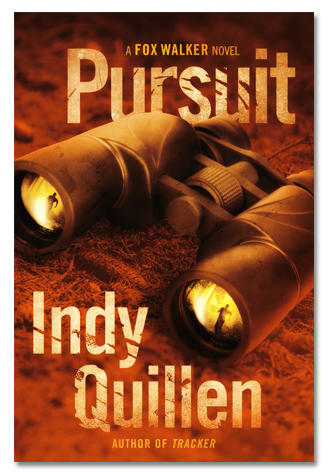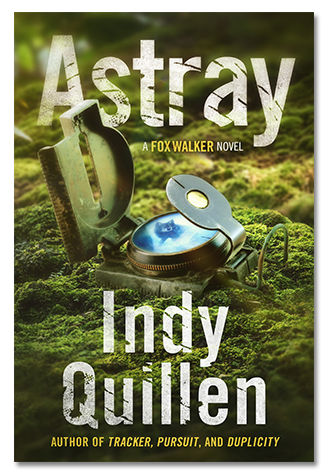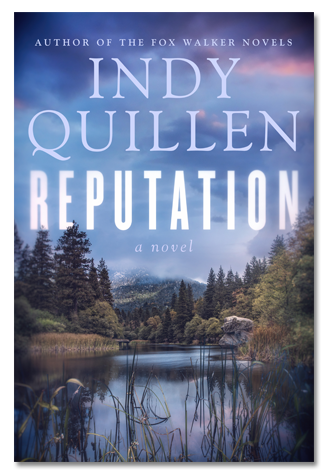How often do you think about the water you use everyday?

Most people in America are spared the worry of finding water for the day. We turn on a faucet and out pours the life-saving liquid. But that’s not the case in other parts of the world. While it’s a blessing to not have to daily worry about water, it does make us complacent about the topic. We forget that we will die without it. Most of us didn’t grow up learning how to even find water, let alone make it safe to drink!
Why is Water so Important?
If you read any of my blogs regarding water storage, you already know the Rule of Three’s:
We can survive 3 minutes without air, 3 hours without proper body warmth, 3 days without water, and 3 weeks without food.
3 Days. Think about that for a moment.
Our bodies need water for cell reproduction, to maintain a functioning body temperature, flush toxins from our bloodstream and for proper digestion. The first sign of dehydration is dark yellow urine. Symptoms will get worse, including constipation, diverticulitis with abdominal pain and nausea. Then follows the intestinal blockage, headache, fever, fatigue, and eventually death from toxemia. Not a pleasant way to go.
What if water didn’t pour out of the faucet when you turned it on? Don’t think it could happen? Think again. Mother Nature has a way of reminding us of her power. Think earthquake, hurricane, tornado, flood, mudslide, ice storm and blizzard. I’ve already experienced four out of seven of these. How about you? And we haven’t even touched on the man-made emergency situations, such as widespread power outages or chemical spills.
The Dangers of Drinking Untreated Water
Drinking untreated, contaminated water can be as deadly as not having enough water, especially if you are not where you can get medical help. Thousands of people still die everyday from waterborne bacteria and parasites. Parasites are not exclusive to third-world countries, or the poor in our country. They are more common and easily contracted than most people believe. One in every thousand Americans contracts a waterborne parasite every year—a terrible and dangerous experience to be avoided.
The three parasites to be most concerned about are Giardia lamblia, Cryptosporidium parvum, and Cyclospora cayentanensis. These digestive tract parasites remain active year round and are not killed by freezing. And we still have bacteria (typhoid, cholera), viruses (hepatitis) and flatworms (tapeworms) to worry about.
When expert wilderness survivalists say it’s no longer safe to drink any wilderness water without first treating it, I take notice. Even those who claim not all wilderness water is contaminated, also agree that even the most remote possibility of getting an infection isn’t worth the risk of not purifying your drinking water.
Ways to Get Safe Drinking Water
Water from Precipitation
Although rain or snow that falls through a heavy smog cover in industrialized areas may contain airborne pollutants, such as sulfuric acid, no known pathogenic organisms are known to exist in falling precipitation.
You can use a poncho or tarpaulin to catch large amounts of rainwater by hanging it slightly tilted, with a water vessel at its lowest corner to catch the runoff. Wilderness survivalists know to drink rainwater from the leaves (make sure the plant is a non-poison one) and even use absorbent clothing to collect the rain, and wring it into a container.
Fresh snow can be safe for drinking, and since you don’t want to eat it in the frozen state but melt it to drink, you can boil it to be sure. Hard-pack snow, that has lain on the ground for days could contain dormant, but still infectious parasites. Take only the top inches and boil it before drinking.
Disinfecting Water by Boiling
This age-old method is achieved by bringing water to a boil for one minute. Even though the reality is that every known organism will be killed before it reaches 212 Fahrenheit, seeing the water boil gives you a visual confirmation that the deadly temperature has been reached. Even heat resistant viruses are killed in this process.
Side-note: although boiling water works to kill all harmful pathogens, it does not remove any heavy metals or toxic chemicals that may be found in groundwater in urban areas or around large agriculture farms that incorporate heavy pesticide usage.
Distilling Water
Distilling water is the result of using heat (sunlight or other) to evaporate raw water into its two component gases: hydrogen and oxygen. Then the two gases are channeled to a small space where they cool, recombine and condense back into water. This time the water is in a pure state because the process leaves behind heavier particles. This method can produce pure, clean water from seawater, scummy pond water, sewer-fouled floodwater and even mud.
Nature uses condensation when it creates dew on the vegetation in the mornings—which by the way is safe to drink. But you can use the sun to make simple solar stills or condensation stills. I’ll be doing a blog in the near future to explore this avenue in more detail.
Chemical Disinfection of Water
Iodine and Bleach have been the two most commonly used chemicals for water treatment. I use these for treating filtered tap water for long-term storage, as it kills algae. But it’s important to know that these methods kill only bacteria and viruses, but not all parasites. So if your water source is anything other than city tap water, it may not give you the protection you think. Still, if it’s all you have, it’s better than nothing!
Chlorine Dioxide tablets, made from a combination of sodium chlorite and sodium dichloroisocyanurate (like the Micopur MP1 tablets from Katadyn) can treat a liter of water by killing giardia, bacteria and viruses within fifteen minutes. It does require a four-hour wait to ensure the demise of other tougher parasites.
The SteriPen is a handheld Ultraviolet water purification system, developed to help those traveling in third world countries, to have safe drinking water. Useful here at home for whenever there is a boil water advisory and you have no power.
Water Filters
The downside to treating water with chemicals or boiling is that neither method removes toxins, such as heavy metals, chemicals. And in the aftermath of a disaster, you can expect water to be contaminated with heavy metals, fertilizers, pesticides and petrochemicals.
Although distillation and condensation methods address this issue, you may not have the time or equipment to set these up in an emergency. The best product to have on hand is the backpack-style water filtration system.
 These portable filters work using a reverse osmosis process. In other words, they force raw water (using external pressure) through a semi-permeable cartridge, whose pores are too small for bacteria and parasitic organisms to penetrate. Some use ceramic filters and some paper and fiberglass. All filters must follow EPA guidelines requiring that they filter out bacteria, cysts and flagellates, and strain out up to 80% of harmful chemicals. They do not filter out viruses, but adding Iodine after filtering will kill the viruses.
These portable filters work using a reverse osmosis process. In other words, they force raw water (using external pressure) through a semi-permeable cartridge, whose pores are too small for bacteria and parasitic organisms to penetrate. Some use ceramic filters and some paper and fiberglass. All filters must follow EPA guidelines requiring that they filter out bacteria, cysts and flagellates, and strain out up to 80% of harmful chemicals. They do not filter out viruses, but adding Iodine after filtering will kill the viruses.
I like having these on hand for emergencies because they are easy to store, quick and simple to operate, and I don’t need heat sources.
These are some of the basic ways to make sure you understand how to make your water the safest you can during any kind of emergency. I hope you found it helpful.
NOTE: Since writing this blog in 2016, we’ve taken the additional step of setting up a Berkey Home Purification System. But they aren’t cheap, so it’s good to have alternatives until you decide to take that next step.


 Being outside in nature is the most basic part of who I am. Besides gaining knowledge about wildlife, I learn lessons about who I am, and surprise myself about what I am capable of achieving. Nature continually inspires me. It is a part of all my writings, no matter the genre or subject matter.
Being outside in nature is the most basic part of who I am. Besides gaining knowledge about wildlife, I learn lessons about who I am, and surprise myself about what I am capable of achieving. Nature continually inspires me. It is a part of all my writings, no matter the genre or subject matter. 





My water storage isn’t the best solution nor does it provide me with enough water to last more than two weeks. I have used my gravity water filter to filter water that I then put in 2 liter soda bottles I collected from friends and washed. To keep the water longer I froze the water and keep it in the bottom of my chest freezer. I plan to upgrade my filter to a berkey soon but have also been considering tablets as a back up.
I hear you Lois! My ultimate goal is a Berkley filter for the home as well. But I do have the backpack filters and love the fact they can filter out everything except viruses – then I can add a little iodine to destroy those, and the water should be good to go. But I can’t imagine trying to do that for multiple people for everyday! Need that big Berkley! :0) Thanks, as always, for weighing in here – appreciate your feedback!